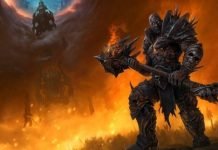Chess is one of the most tactical games ever. It is played by moving pieces in set directions, with specific rules for winning and losing.
Easy right? Well not really. The game goes deeper than just moving pieces in set directions. Chess, by intuitive human standards, is not an easy game. The thinking and calculations that you have to make to decide what move is possible for each of your 16 (or less) pieces combines with the spaces available for movement is just one part of the puzzle. As many as 16^8 permutations are possible at each point in the game.
The second part of the puzzle is the thinking and calculations that you have to make to decide what move is best to make of all the possible moves that you have thought out.
These parts of the game are dependent on you and can be 100% influenced by you. It is entirely your choice to make. The third piece is not in your hands but those of your opponents. For each of those moves you make, there are almost as many moves available for your opponent. Knowing which of these many moves your opponent makes as a response to yours is the hardest piece of the puzzle.

Of course, to get over this hard piece, “traps” are set, and game plans are drawn. Chess masters over the years have developed one tactic over another to dictate the flow of the game. Making informed guesses on how an opponent will react to your game plan by estimating what you would do in such scenario and basing your next plan on that.
So what happens when you take intuition out of the game?
Introducing the AI chess machines.
With the wave of new technology sweeping aboard, many IT companies have developed machines that can analyse each of these three pieces of the chess grand puzzle.
The AI is so expertly programmed that they analyse all possible moves that can be made at each point in time by both their piece and the piece of the opponent. With the advanced memory capacity of these machines, they can process all these moves and know which move will be the best that their opponent will play. They do this by watching the player patterns and tactics and using it to determine future moves based on experienced gained by playing and studying games of other grandmasters.
In reaction to the proposed player moves, the machine then makes his move. This helps it to plan and avoid being taken unawares. This is a move that has worked wonders for many chess grandmasters and was working well for the machines.
But the caveat of this is that the Machines were being very defensive in their game plan. Reactionary instead of proactive. As a result of the removal of intuition, the element of mistake was removed from the machine’s game.
The plan reached the peak of its success in 1997 when legendary chess grandmaster Garry Kasparov was beaten by IBM’s supercomputer, the Deep Blue.
In a battle dubbed “The Brain’s Last Stand”, the conventional human way of thinking, and playing the game which was filled with intuitive moves was challenged by an AI machine that based mainly on reactionary defensive moves, relying on exploiting mistakes of its human opponent.
It was a six-game battle.
Besides the human exhaustion that was felt by only Kasparov, and the psychological stress that he was handling, including IBM undermining their machine before the match, the game was a very tactical game. Two unique styles came up against each other.
Kasparov took the first match. At that point, he was feeling pretty confident. But then, the turning point of the battle came in the second game of the set. It was in this second set that the ability of the machine to calculate the opponent’s thoughts correctly came to full flow.
Having succeeded in setting “traps” for the machine, Kasparov exposed his queen in his 36th move. Deep Blue’s reply was epic. He had studied Kasparov’s patterns and instead of being proactive, taking the exposed piece, he made a much subtler decision, and that changed Kasparov’s thinking of Deep Blue’s ability.
He was thrown off and his game plan shattered. Defensive tactical plans were overtaking human intuition at the highest level. For the next game sets, Kasparov focused on damage limitation. He requested printouts to justify the computer’s decision. He held on to a few games but ended up losing the battle 2-1.
Over the next few decades, defensive masterplans reigned supreme, with fewer risky moves being played.
Fast forward two decades later, and the battle of the machines between the worlds champion chess engine, the Stockfish 8, and Google’s latest AI evolution, AlphaZero: a superhuman AI evolution developed by DeepMind, Google’s AI department.
Stockfish had excelled at its tactical understanding of virtually all aspects of the game. The people behind it had programmed all strategies known to have succeeded in it. AlphaZero, on the other hand, was programmed with only the rules of chess. Nick, the owner of Elive (an IT Firm from Auckland, NZ), says “No strategy was input into the machine. It was built to be a replica of the human champion many years ago before Deep Blue changed the rules and winning strategy of the game”. AlphaZero had taken just 4 hours to learn all the rules before heading into the epic battle.
AlphaZero had an unconventional view of the game, and it showed just 21 moves into one of the epic battles. StockFish was playing as black, and AlphaZero as white. As was his tradition, StockFish had built a healthy advantage based on his piece count using his strong defensive position.
Then the turning point came, unlike what most machines would do, and what grandmasters would do before Deep Blue’s change of chess tactics, AlphaZero moved his bishop into Stockfish’s half, within reach of his pawn. The reaction of Stockfish was expectedly defensive, and suddenly the black pieces were drawn out, and the board began to open up.
Intuition had won again. The machine made up its strategy, unlike Stockfish who was fed his strategy and suffered then human bias.
Kasparov confirmed this change: “AlphaZero sacrifices, much like I would have played. Making brave, aggressive, attacking moves.”
Finally, by teaching itself to solve diverse problems without fixed strategies and human opinions, it has done what no AI had made use of, the intuitive ability.
The game has changed back to intuitive players, AI, and precisely, AlphaZero had changed the game of chess once more.



